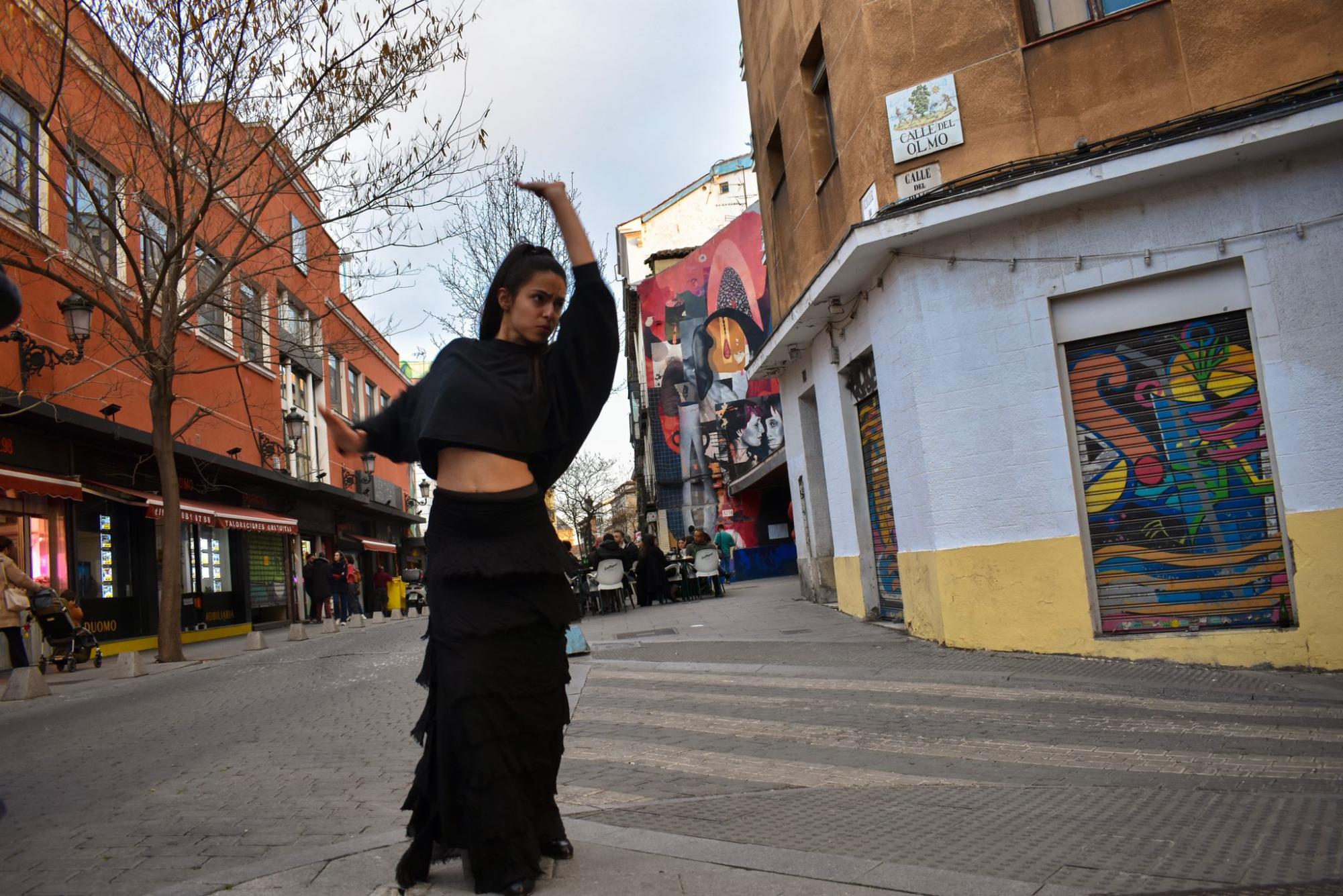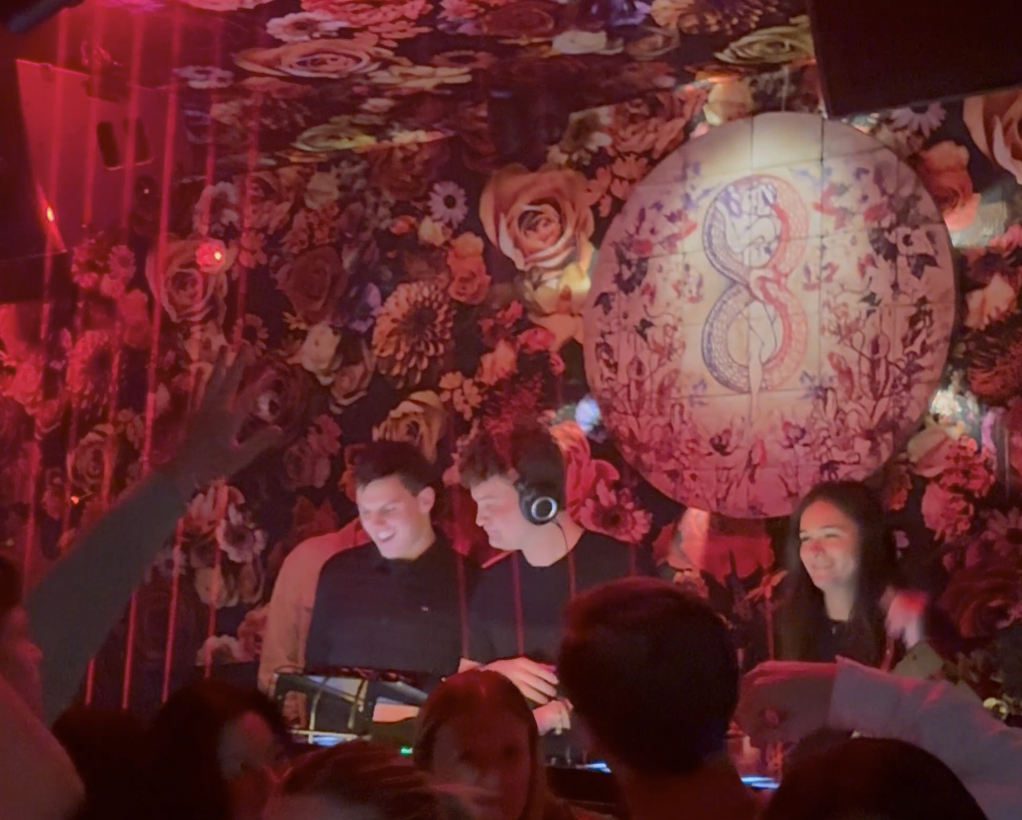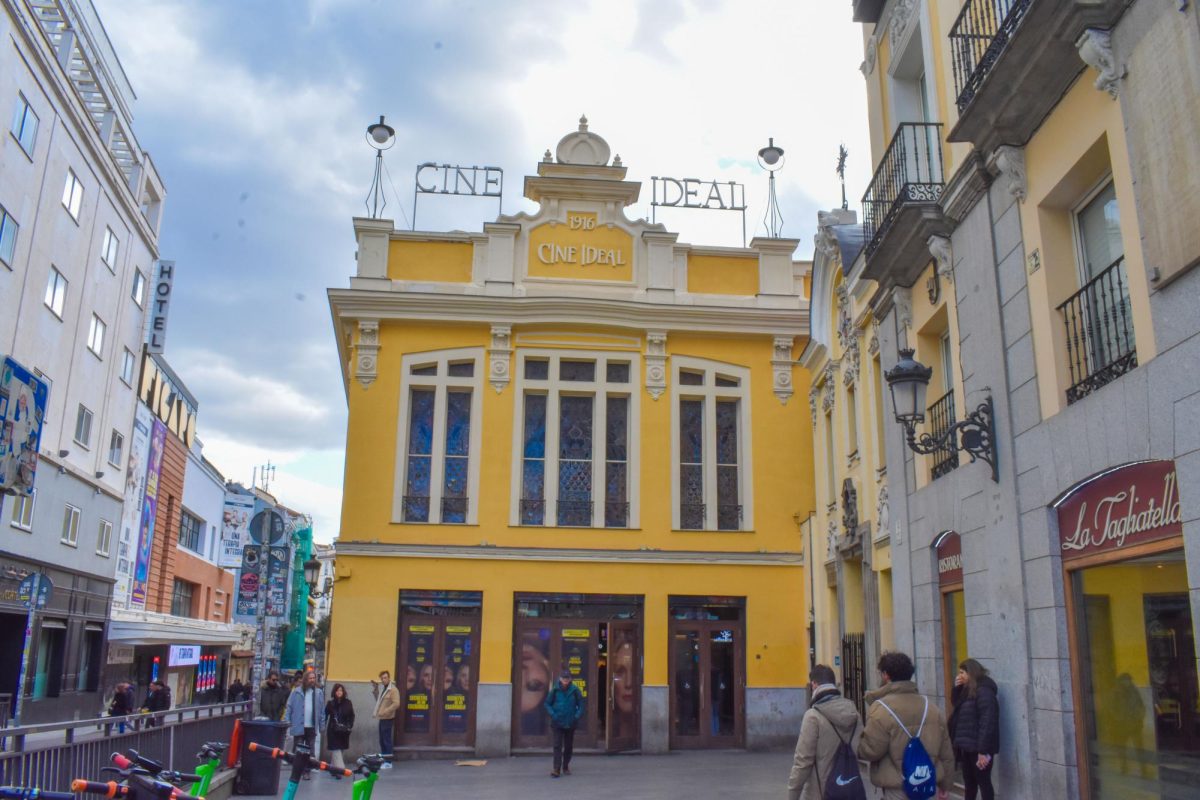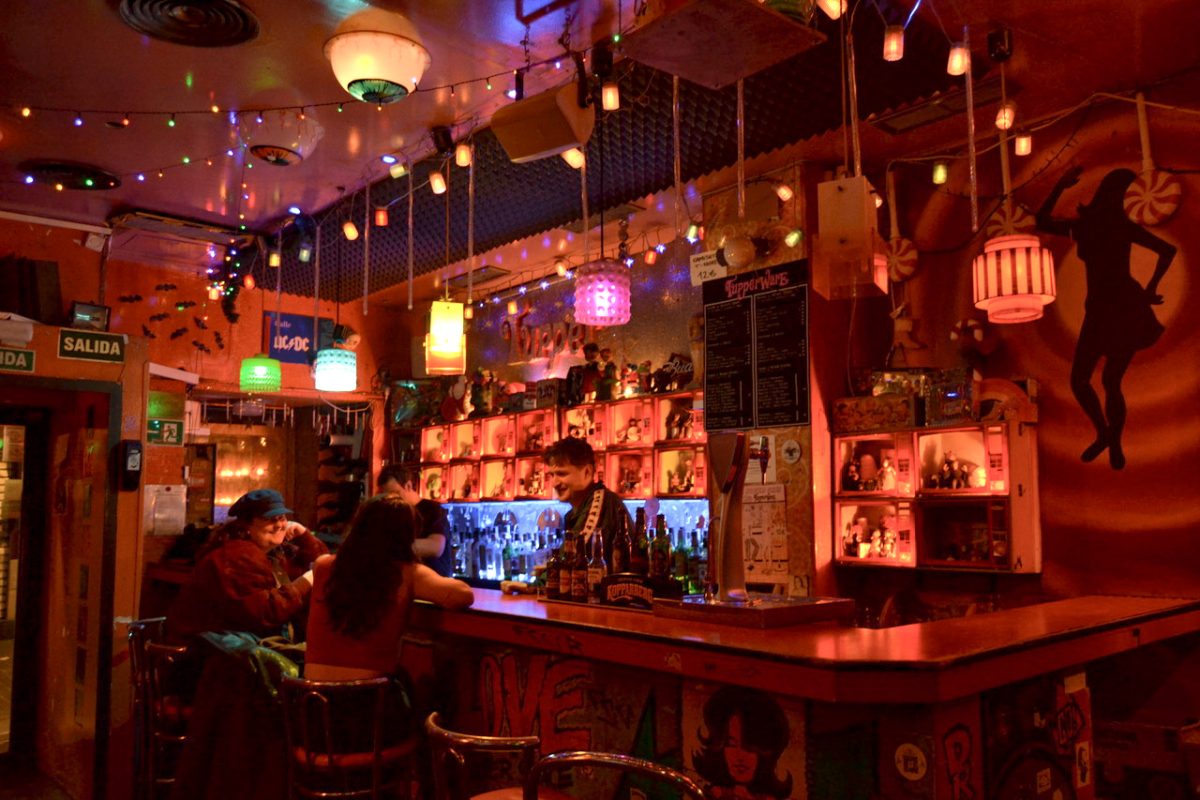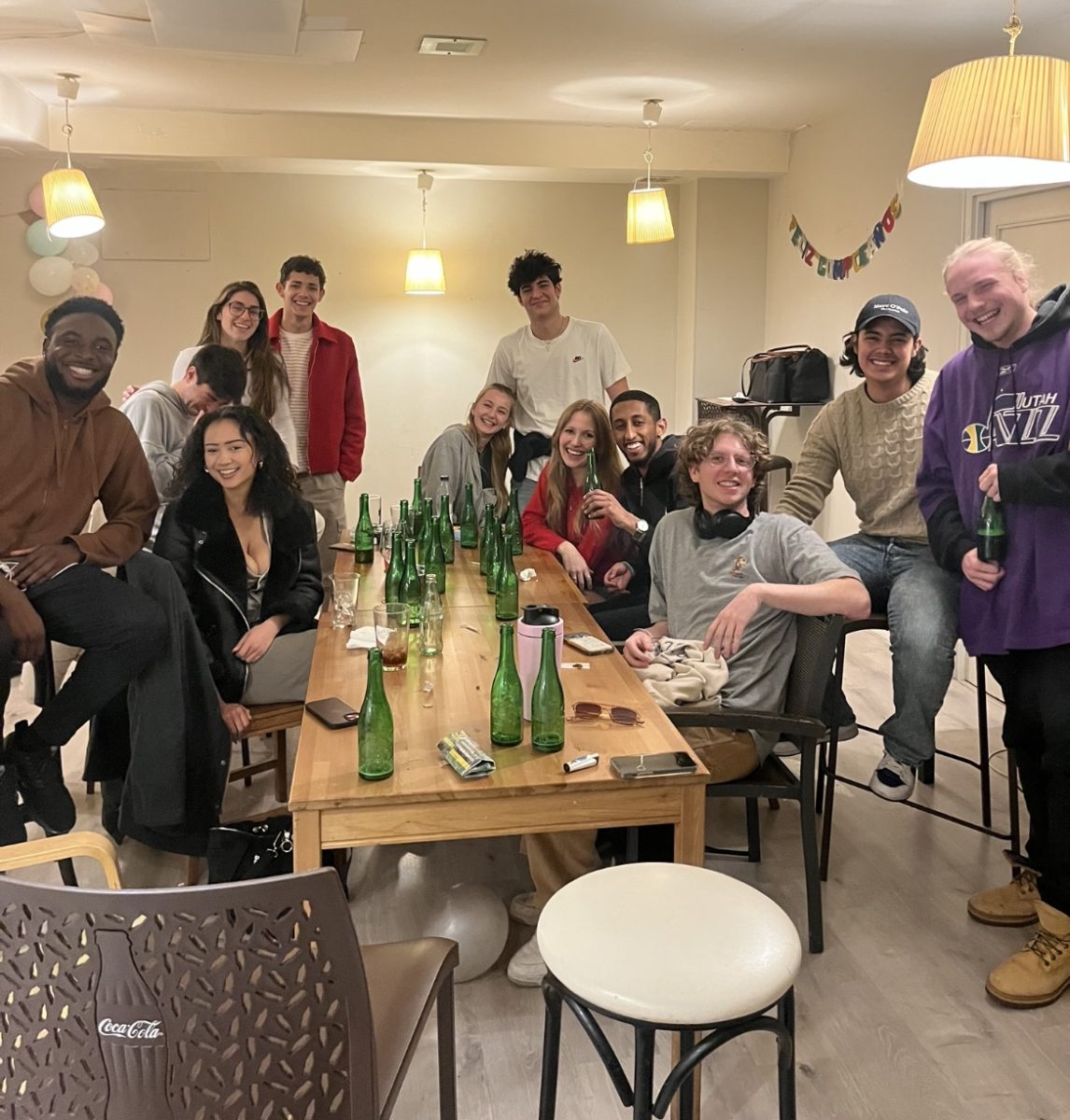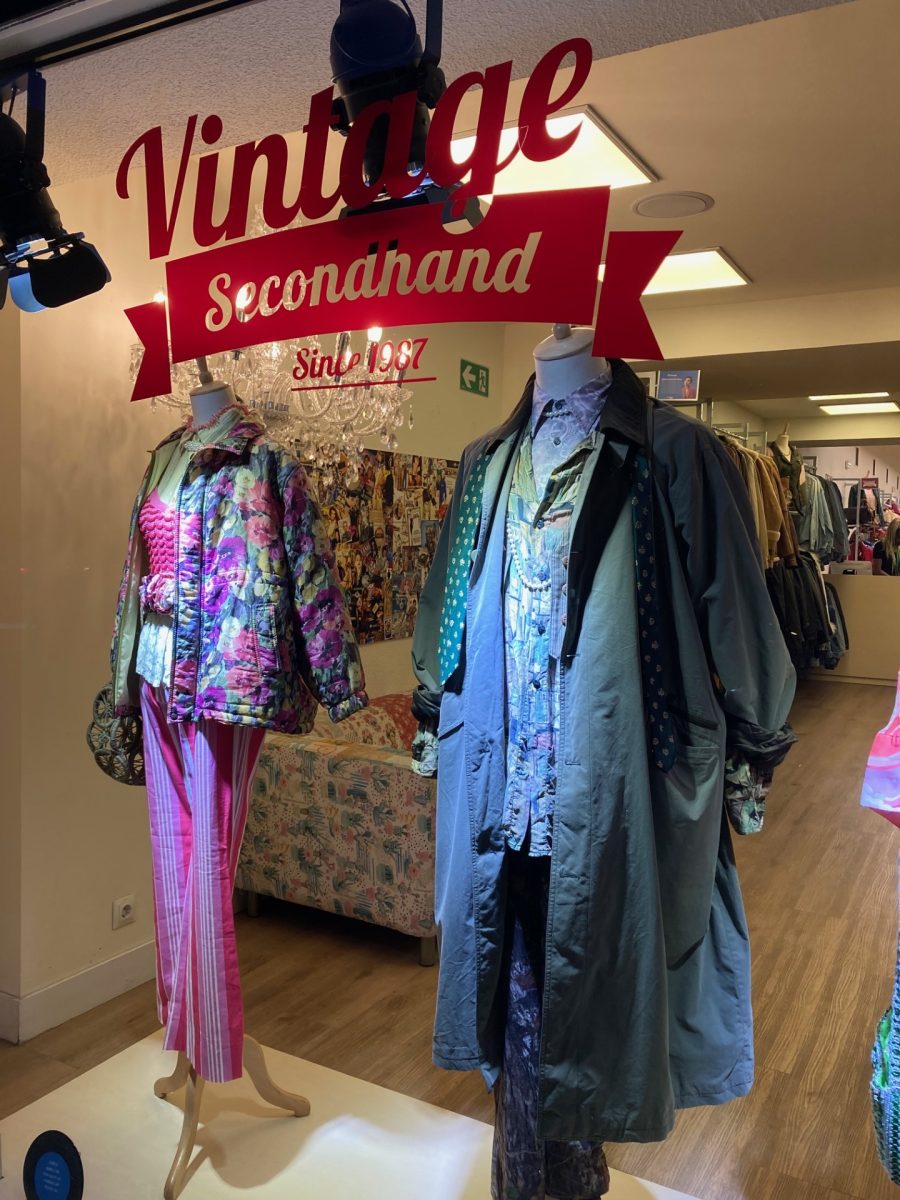When the petite 21-year-old student from Texas walked into Amor de Dios Flamenco dance studio in Madrid not knowing how to speak Spanish, instructor Pedro Cordoba thought she was just a beginner and he never imagined in just three months she would be dancing tangos and seguiriyas alongside the top members of the class.
“The first time she took my class, it was like this,” said Cordoba as he starts to dance nervously, tripping over his own feet twice, a drastic difference from his pupil’s now-improved zapateado, or footwork. “Most people who come to the first day like that, they last a week then they quit because they think it’s too difficult. Mia came and kept coming and coming. For some people, the level of the class is too high and after some months, they drop to a lower class to start little by little, then later come back. But Mia never stopped showing up to the advanced classes.”
While he speaks, Mia sips on her cerveza, gazing at Cordoba. “I’ve been dancing for 17 years, waiting to be here in Spain at this studio, of course I wouldn’t give up,” she says.
“What type of dancing?” Cordoba asks, raising a single brow. He later admits that he hadn’t asked Mia about her dance history until now.
Mia takes another gulp from the 6 oz.-glass bottle and grins as she answers: “Flamenco.”
Her stage name: Mia Angela de Lourdes.
Mia Angela de Lourdes is a passionate young flamenco dancer with a flaming heart tattoo on her chest to represent the passion burning inside her since she first started dancing at age 4. Her alter ego, Mia Potter, is an average 21-year-old woman juggling four communications classes, practicing her Spanish and making time for new friends — all in an unfamiliar country.
“To my friends, I am simply Mia, Mia Potter, but when I dance, I am an artist. I am Mia Angela de Lourdes,” said Potter.
The same young woman, living a double life. Since the age of four, Potter has been chasing her goal to dance at a Flamenco school in Madrid, Spain, and now, she’s living it.
“I called Madrid my goal, everybody said it was a dream, but dreams fade away. I told myself, Get to the goal. Get to the goal. Get to the goal,” says Potter. “I got here, and I said, well now what? And my mentor looked at me and said, Dance!”
After many years of out-growing dance instructors in Sant Antonio, Texas, and saving up money from dancing gigs in Colorado since the age of 14, Potter applied to Saint Louis University in Madrid in 2020 – just when the pandemic hit. Like many other students, the strict travel bans and security measures not only kept her from traveling but left her fearful of what would happen to Flamenco.
Prior to the pandemic, there were 93 tablaos, or Flamenco shows, in Spain, but they have reduced to 60 due to the plummeting number of tourists that originally made up 80% of the tablaos income, according to Spain’s National Association of Flamenco Tablaos.
Madrid alone lost six out of its 22 tablaos in 2020, among them one of the city’s oldest and best-known venues, Villa Rosa in the Plaza Santa Ana, which has now reopened under a new name, 1911. Venues that originally had capacity of 80 to 100 people were limited to only 30 to comply with social-distancing regulations during the pandemic.
As an outsider and watching the Flamenco Venues get shut down, Potter remembers thinking she had lost her shot for good. “I saw the Flamenco world just crash in front of me,” she said.
Inspired at age 10 by a YouTube video of famous flamenco dancer Carmen Amaya dancing in pants, Potter recalls looking at her mother repeatedly saying, “I want to be a flamenco dancer! I want to be a flamenco dancer!”
After a quick google search on Carmen Amaya and flamenco classes, the inspired young artist found Amor de Dios Dance Studio located on the third floor of Mercado de Anton Martín in one of Madrid’s central neighborhoods.
After nine devastating months without dance, Mia was eventually able to move to Spain, but before jumping into the studio, she had to focus on something more important: school.
“Last year I took a break from dancing because my school schedule conflicted with dance classes, but that gave me time to build my community at SLU,” said Potter.
At 11 p.m. on a Friday might in her friends’ apartment, while others shout over the rap and R&B music, copas in hand, and chat about celebrity drama and strange events they encounter in the city, Potter stands in the center of the living room rehearsing her zapateado or footwork.
“Mia always has so much energy and she brings it with her everywhere she goes,” said Sara Gilchrist, a close friend that Mia met at Saint Louis in Madrid. “It’s great to have friends who are so passionate about something because they inspire you to pursue your own passions. You think, ‘Hey, if they can do it all, I can to,’ and those are the people everyone should surround themselves with.”
While her passion for flamenco triumphs her desires to study, like any young adult Mia Potter wants both worlds. That way she’s able to be a part of a large community with Flamenco dancers from Spain and Mexico, and American students living and learning abroad just like her.
Now the dancer Mia Angela de Lourdes has adjusted her schedule to fit in four academic classes, daily flamenco classes, and even encountered a job opportunity walking a dog, a large golden retriever.
“I start my days at 11 a.m.,” she said. “I make breakfast (a bagel and a coffee), I go to dance class at 1 p.m., and I almost always try to get beers with my dance group. After that I walk the dog for an hour. I go to uni for classes in the afternoon — 3:30 to 5 p.m., 5 p.m. to 7 p.m. — I make dinner and then I try to do my homework, so I stay up till 1 a.m., sometimes even 3 a.m.”
Class has just finished at Amor de Dios. The other dancers sit and yank off the tight Flamenco shoes, leave the studio to change out of their sweaty, oversized dancing clothes into jeans, dresses, button-up blouses, sneakers and boots — all except for Mia, who taps her feet in the middle of the room, hips swaying, eyes locked on her own reflection in the giant mirror.
Pantera, the stage name of the guitarist, sits up from his chair, guitar strapped around his upper body, and begins to strum the tune of “What I got” by Sublime while the tapping of Potter’s feet bangs around the room. “Early in the morning, rising to the street, light me up that cigarette and I’ll strap shoes on my feet,” they sing as the tapping slows and Potter – or rather Angela de Lourdes — waves her hands above her head before they belt out, “Lovin’ is what I got! I said remember that, Lovin’ is what I got!”
Eventually, Mia joins the dancers and performers outside. Bursts of laughter and talks of Spanish politics float around the second floor of the Mercado de Anton Martin, where the entire class, dancers, instructor, guitarists, singer, and flautist, toman una cerveza, or have a beer – as they do after every class. It’s a custom, they say.
During her first month, Mia made up any excuse to not tomar una cerveza with the others as to avoid the embarrassment of her gringa accent and repeating “huh?” every time she was spoken to in Spanish.
“I would go and just sit like a fly on the wall in the corner not saying anything, but I was like ‘Mia what are you doing??’ and one day I just threw myself out there,” said Potter. “It took some time but now my flamenco class is like family and my Spanish is almost fluent.”
